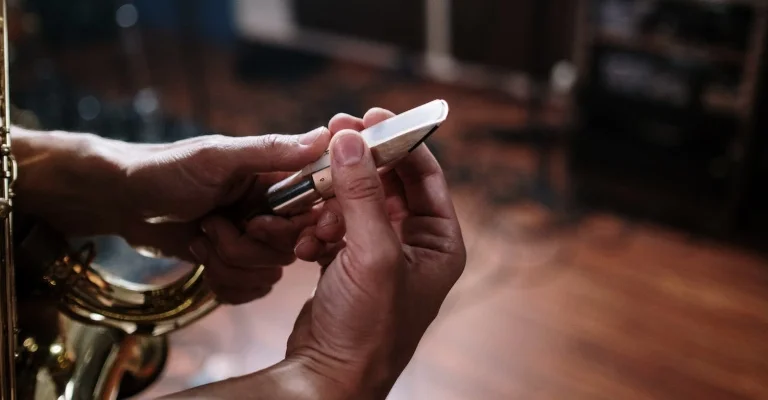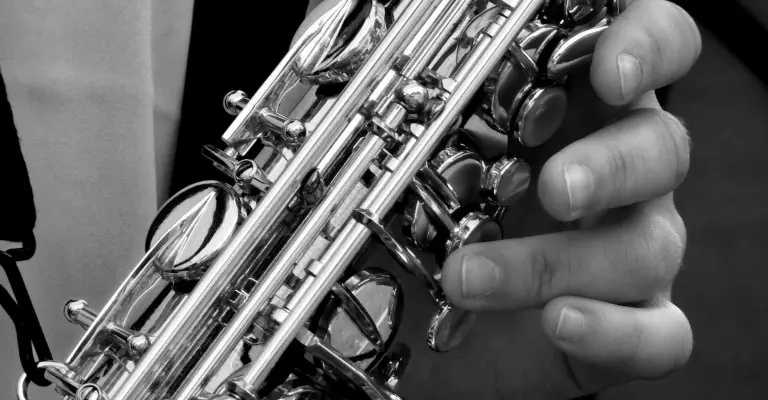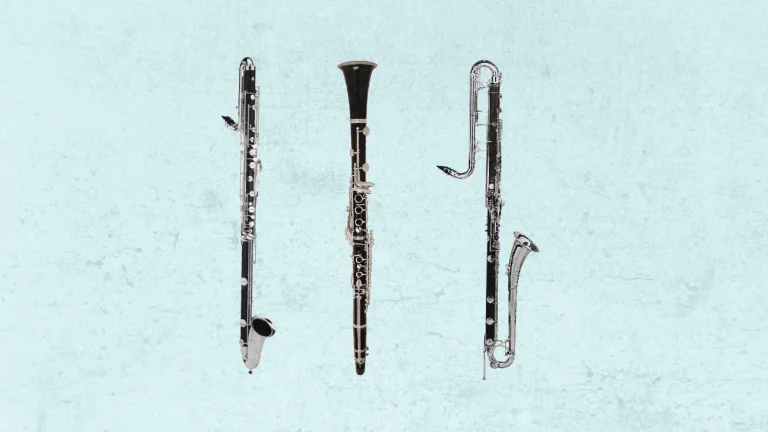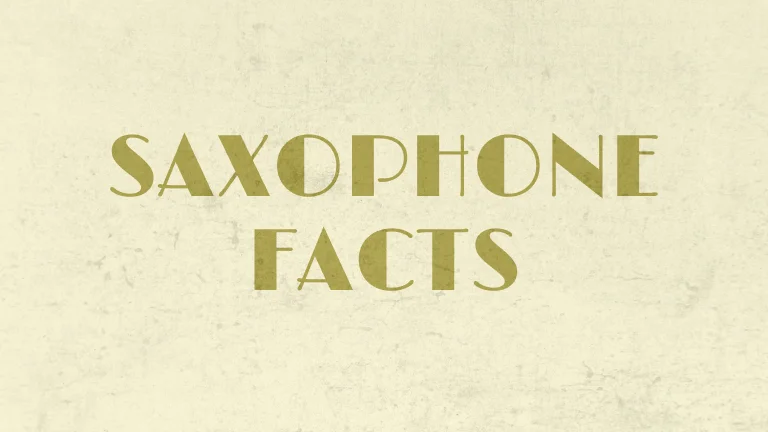If you are a sax player then you need to know how to tune a saxophone and it’s important to know how to do it properly.
Like every musical instrument, the saxophone needs to be in tune to sound good. If not, then your melodies won’t sound good.
Tuning might be a new thing to beginner sax players and this post is a perfect place to understand and learn it.
Tuning Tips For Different Saxophones
Saxophones require a careful tuning approach due to their various types and unique tonal qualities. Knowing the specifics of each type will help you to tune your instrument correctly.
So, here are some general tips to tune various types of saxophones.
Alto Saxophone: When tuning an alto saxophone, start by focusing on the A and F# notes because these notes are fundamental for tuning. Also, make sure to adjust the mouthpiece and neck properly to preserve the instrument’s distinct and vibrant sound.
Tenor Saxophone: Tuning a tenor saxophone requires a specialized approach because it’s a low-pitch instrument. Align the mouthpiece correctly and make precise adjustments to the neck to achieve a warm and resonant pitch.
Bb And Eb Saxophones: It’s important to understand how saxophones in different keys transpose. When playing with other instruments, make sure the saxophone’s pitch is in alignment. For B♭ instruments such as tenor and soprano saxophones, pay attention to accurate tuning to match the concert pitch.
How To Tune A Saxophone
So, now let’s dive in and learn the right way to tune saxophones. Also, you need to use a tuner for a sax to know if the note is in the correct pitch.
1. Warm Up Your Sax

Before you start tuning, it’s important to acknowledge the significance of warming up your instrument. Skipping this step can greatly affect the precision of your tuning and the overall sound.
For example, playing a cold saxophone can introduce pitch fluctuations, especially in the lower and higher registers. By warming it up and allowing the saxophones to reach a stable temperature, you set a solid foundation for making tuning adjustments.
Warming up also enhances the tone quality. It makes the metal more flexible and the sound becomes fuller and vibrant.
This needs to be done for any saxophone – professional, intermediate, or any saxophone for new players too.
2. Adjust Mouthpiece And Neck

Tuning a saxophone involves adjusting its main parts – mouthpiece and neck. These adjustments are important because they directly affect the instrument’s pitch and sound quality.
A properly fitted mouthpiece guarantees a consistent airflow that meets the reed, resulting in a harmonious and balanced tone. On the other hand, correct positioning of the neck guarantees consistent sound throughout the instrument’s range, making it easier to transition between notes and achieve professional sound.
If some notes on your saxophone are flat try loosening the mouthpiece a little bit. But if a note is sharp, then you need to tighten the mouthpiece.
Additionally, the state of the neckcork is important, because it affects the saxophone’s pitch. If it’s worn out or compressed, it can disrupt the alignment between the mouthpiece and neck. In these situations, replacing or adjusting the cork can help in achieving the best result.
3. Adjust Body And Keys

Besides the mouthpiece and neck, it’s important to adjust the saxophone body and keys.
Mechanisms in a saxophone body, when finely tuned, contribute to a harmonious and accurate pitch. Also, adjusting the keys is equally important because they have an impact on the overall tonality.
Misalignments or deformities in the body can lead to air leaks and disrupt the instrument’s pitch. Regular checks for any dents, misalignments, or damage to the body are essential to maintaining optimal tuning.
It’s important to make proper adjustments to ensure that every key closes tightly, preventing air from leaking and keeping the instrument’s sound consistent. Regularly lubricating the key mechanisms is crucial to avoid them from getting stuck and to ensure a smooth and accurate response while playing your saxophone.
Knowing how to properly adjust the body and keys of your saxophone is important for both getting the right pitch and keeping your instrument in good condition for a long time.
4. Check Tuning

After you tune a saxophone it’s time to check if it’s tuned properly. This could be achieved by playing various scales, melodies, etc.
Scales: Start by playing scales whether it’s a simple major scale or a more intricate jazz scale. Pay attention to any changes in tone while playing higher or lower notes. A properly tuned saxophone should produce consistent and clear notes across all ranges.
Melodies: Choose a familiar melody – a favorite sax song or a piece of music you’re currently working on. Pay close attention to how each note resonates within the melody.
Harmonic Intervals: Play intervals such as thirds, fifths, and octaves, and listen for any dissonance or lack of clarity. It’s important to tune accurately when playing with other instruments and intervals can help train your ear to detect small changes in pitch.
If you check your saxophone tuning with different methods, you will have a better result and your instrument will be perfectly tuned.
Avoid Mistakes When Tuning A Saxophone
As you can see, achieving perfect tuning on a saxophone requires accuracy but there are some common mistakes players make, especially beginners.
Here are a few common mistakes to avoid:
Neglecting Mouthpiece Care: Overlooking the cleanliness and condition of the mouthpiece can lead to bad sound quality and uneven tuning.
Ignoring Key Mechanisms: Not lubricating key mechanisms can result in sticking or sluggish key response, impacting tuning and overall playability.
Neglecting Instrument Maintenance: Ignoring general saxophone maintenance can lead to issues such as leaks, affecting overall tuning and playability.
Inconsistent Reed Quality: Using worn-out or inconsistent reeds can result in unpredictable intonation and tone quality during tuning.
Conclusion
So, to tune a saxophone perfectly, you need to use a tuner, and adjust parts like neck, mouthpiece, body, and keys. But also, it’s important to do consistent maintenance of your sax and its part. Your favorite instrument will always be in good condition and the tuning process will be much easier and faster.





